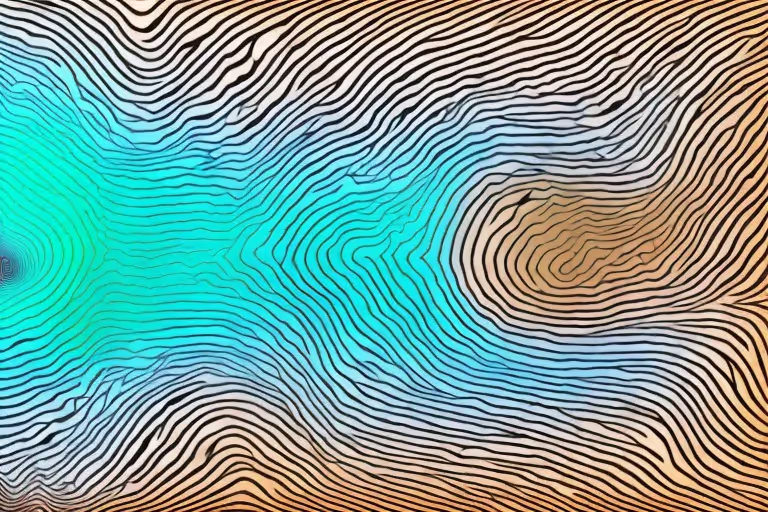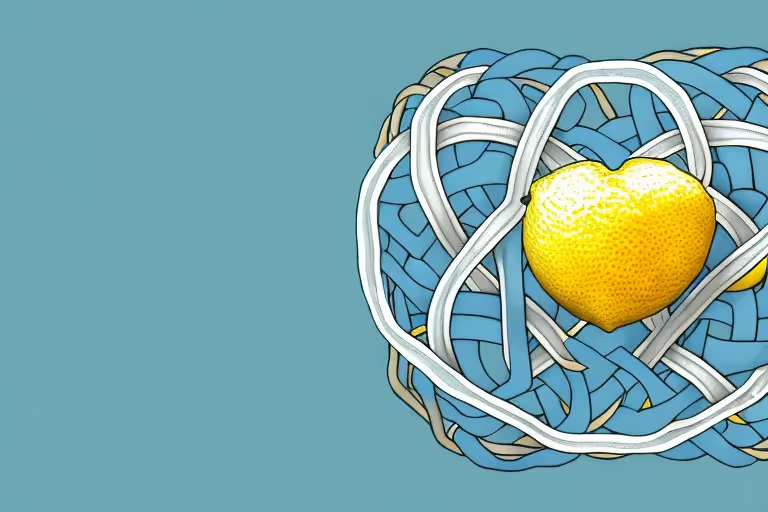Welcome to the comprehensive guide to brown noise! In this article, we will explore the basics of sound frequencies and delve into the intriguing world of brown noise. So, put on your headphones and get ready to dive deep into the science of sound!
Understanding the Basics of Sound Frequencies
Before we dive into the specifics of brown noise, let's take a moment to understand the basics of sound frequencies. Sound waves are characterized by their frequencies, which determine the pitch or tone of the sound. The higher the frequency, the higher the pitch, and vice versa.
The Science Behind Sound Waves
Sound waves are created by the vibration of an object. These vibrations travel through a medium, such as air or water, and stimulate our eardrums, allowing us to perceive sound. Isn't it fascinating how vibrations can create the beautiful symphony of the world around us?
When an object vibrates, it causes the molecules in the surrounding medium to vibrate as well. These molecular vibrations create a chain reaction, propagating the sound wave through the medium. The speed at which sound travels depends on the properties of the medium. For example, sound travels faster through solids than through liquids, and faster through liquids than through gases.
Sound waves can be classified into different types based on their frequencies. The audible range for humans is typically between 20 Hz and 20,000 Hz. Frequencies below 20 Hz are known as infrasound, while frequencies above 20,000 Hz are called ultrasound. Within the audible range, we have low-frequency sounds, mid-frequency sounds, and high-frequency sounds.
Low-frequency sounds have a slower rate of vibration and are often associated with deep, rumbling tones. Think of the distant rumbling of thunder or the growl of a large animal. These sounds have a calming effect and can create a sense of depth and power.
Mid-frequency sounds fall in the middle range of the audible spectrum. They are commonly found in everyday sounds like human speech, music, and the chirping of birds. These sounds are essential for communication and are often perceived as pleasant and harmonious.
High-frequency sounds have a faster rate of vibration and are associated with sharp, piercing tones. Examples include the sound of a whistle, the screeching of brakes, or the buzzing of insects. These sounds can be attention-grabbing and may evoke feelings of alertness or irritation.
Different Types of Sound Frequencies
There are various types of sound frequencies, each with its own unique characteristics. We have high-pitched sounds, like the chirping of birds, and low-pitched sounds, such as the rumbling of thunder. But what about brown noise? Let's explore!
Brown noise, also known as Brownian noise or red noise, is a type of random noise that has equal energy per octave. It is named after the Scottish botanist Robert Brown, who first observed the random motion of particles suspended in a fluid. Brown noise is often described as having a deep, soothing quality similar to the sound of a waterfall or the rustling of leaves in a forest.
Unlike white noise, which has equal energy across all frequencies, brown noise has more energy in the lower frequencies. This characteristic gives it a rich, full-bodied sound that can be used for relaxation, meditation, or masking other unwanted sounds. Brown noise is also used in certain audio engineering applications, such as equalization and testing audio equipment.
Now that we have a better understanding of sound frequencies and the different types of sounds they produce, we can delve deeper into the world of brown noise and explore its unique properties. So, let's continue our journey and uncover the secrets of this fascinating auditory phenomenon!
Defining Brown Noise
Ah, brown noise – a unique member of the sound frequency family. Known for its soothing and relaxing qualities, brown noise is often used for sleep, sound therapy, and even music production. But what exactly makes brown noise, well, brown?
The Characteristics of Brown Noise
Brown noise is a type of random noise that has a deeper and richer quality compared to other types of noise. It is often described as a low, rumbling sound, similar to the sound of a waterfall or distant thunder. Close your eyes and let yourself be transported to a serene natural setting!
Imagine standing at the edge of a majestic waterfall, feeling the mist on your face and hearing the powerful rush of water cascading down the rocks. That is the essence of brown noise. Its deep and resonant tones create a sense of tranquility, enveloping you in a cocoon of calmness.
How is Brown Noise Produced?
Brown noise is produced by creating a sound signal with a power spectrum that decreases by 6 dB per octave. This gradual decrease in power results in a deep and relaxing sound that can help you unwind after a long day. So, whenever you need to de-stress, brown noise might just become your new best friend!
Picture yourself lying on a sandy beach, the gentle waves lapping at the shore, and the soft rustling of palm leaves in the breeze. This is the kind of atmosphere that brown noise creates – a serene and peaceful ambiance that washes away the stress and tension of everyday life.
But how does the magic happen? Brown noise is generated by a random process called "Brownian motion." This phenomenon, named after the Scottish botanist Robert Brown, occurs when particles suspended in a fluid undergo erratic, random movements. These movements are then converted into sound waves, producing the unique and comforting brown noise we know and love.
Whether you're trying to fall asleep, meditate, or simply find a moment of tranquility in a chaotic world, brown noise offers a sonic sanctuary. Its deep, enveloping tones have the power to transport you to a state of deep relaxation, where worries melt away and peace prevails.
The Difference Between Brown, White, and Pink Noise
With all this talk about brown noise, it's only fair to explore how it differs from its noise relatives – white and pink noise. Each of these noises has its own unique qualities that make them special in their own way.
Brown Noise Vs. White Noise
While both brown and white noise contain a range of frequencies, they have different distributions. Brown noise has a higher power in the lower frequencies, giving it a more low-pitched and soothing quality. On the other hand, white noise has equal power across all frequencies, resulting in a hissing and static-like sound.
Brown Noise Vs. Pink Noise
Similar to brown noise, pink noise has more power in the lower frequencies. However, pink noise has a more balanced distribution across the different frequencies, creating a gentle, flowing sound. So, whether you prefer the deep rumble of brown noise or the gentle whispers of pink noise, there's a sound frequency for everyone!
The Applications of Brown Noise
Now that we have a good grasp of what brown noise is, let's explore its various applications and how it can enhance different aspects of our lives.
Brown Noise in Sound Therapy
Sound therapy has gained popularity as a complementary approach to promote relaxation and well-being. Brown noise is often used in sound therapy sessions to induce a state of deep relaxation and reduce stress. So, the next time you're feeling overwhelmed, plug in your headphones and let the soothing sounds of brown noise work their magic!
Using Brown Noise for Sleep
Difficulty falling asleep? Brown noise might be the answer to your sleepless nights! Many people find that the deep and steady sound of brown noise helps them drift off into a peaceful slumber. Create a calming bedtime routine by incorporating brown noise into your sleep environment and say goodbye to tossing and turning!
Brown Noise in Music Production
Brown noise is not only used for relaxation but also finds its place in the realm of music production. It can be used as a background element to add depth and texture to compositions. The unique characteristics of brown noise make it a fascinating tool for musicians and sound engineers alike. Let your creativity flow with the help of this enchanting noise!
The Benefits and Potential Drawbacks of Brown Noise
Like anything in life, brown noise comes with both benefits and potential drawbacks. It's important to be aware of these to fully understand how brown noise can impact your well-being.
The Positive Effects of Brown Noise
Research suggests that brown noise can have a positive impact on sleep quality, relaxation, and focus. By creating a soothing auditory environment, brown noise can help lull you into a state of tranquility and boost your overall well-being. So, embrace the power of brown noise and let it whisk you away to a serene oasis!
Possible Side Effects and Precautions
While brown noise is generally safe for most individuals, it's important to listen at a comfortable volume to avoid any potential side effects. Excessive exposure to loud noise, including brown noise, can lead to hearing damage. So, remember to find the sweet spot and enjoy the benefits of brown noise without overdoing it!
So there you have it – a comprehensive guide to brown noise, from understanding the basics of sound frequencies to exploring its applications and potential drawbacks. Whether you're seeking relaxation, a good night's sleep, or a creative boost, brown noise is here to serenade you with its enchanting rumble. So, unwrap the gift of brown noise and embark on a journey of tranquility and harmony!
Aura is Your All In One App for Meditation, Mindfulness Wellbeing
Find peace every day with one app for your whole well-being. There is no one-size-fits-all solution to mental well-being. Aura is the first all-in-one wellness app that learns how to best help you. Discover an endless library of expert-created tracks for your well-being, all taught by the world’s best coaches, therapists, and storytellers. With Aura's personalized recommendations, you can find peace every morning, day and night.



.webp)






.avif)

%20(1).avif)


.avif)
.avif)
.webp)


.avif)


















































































































.avif)

















.svg)









